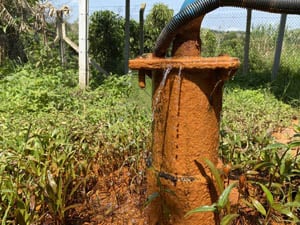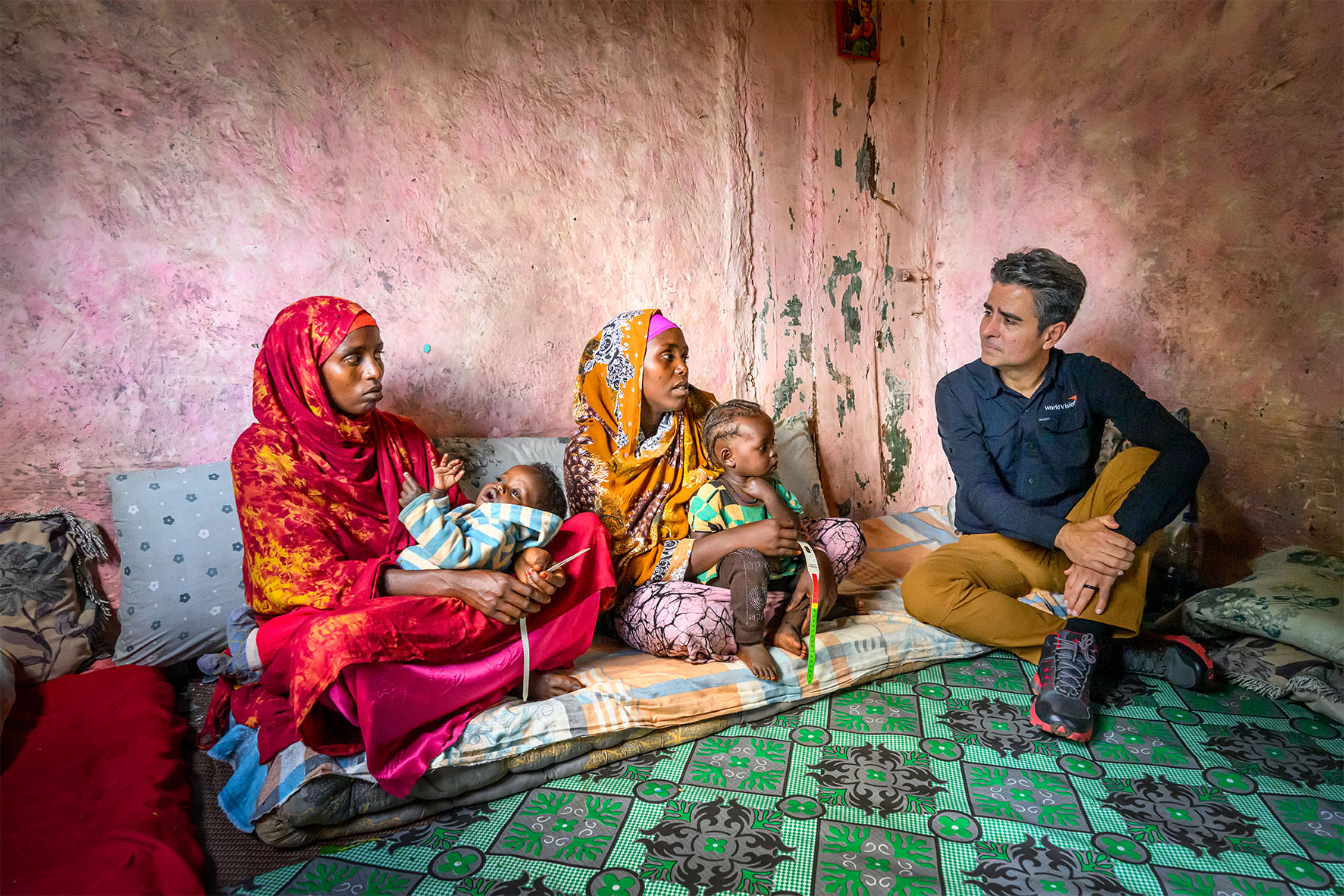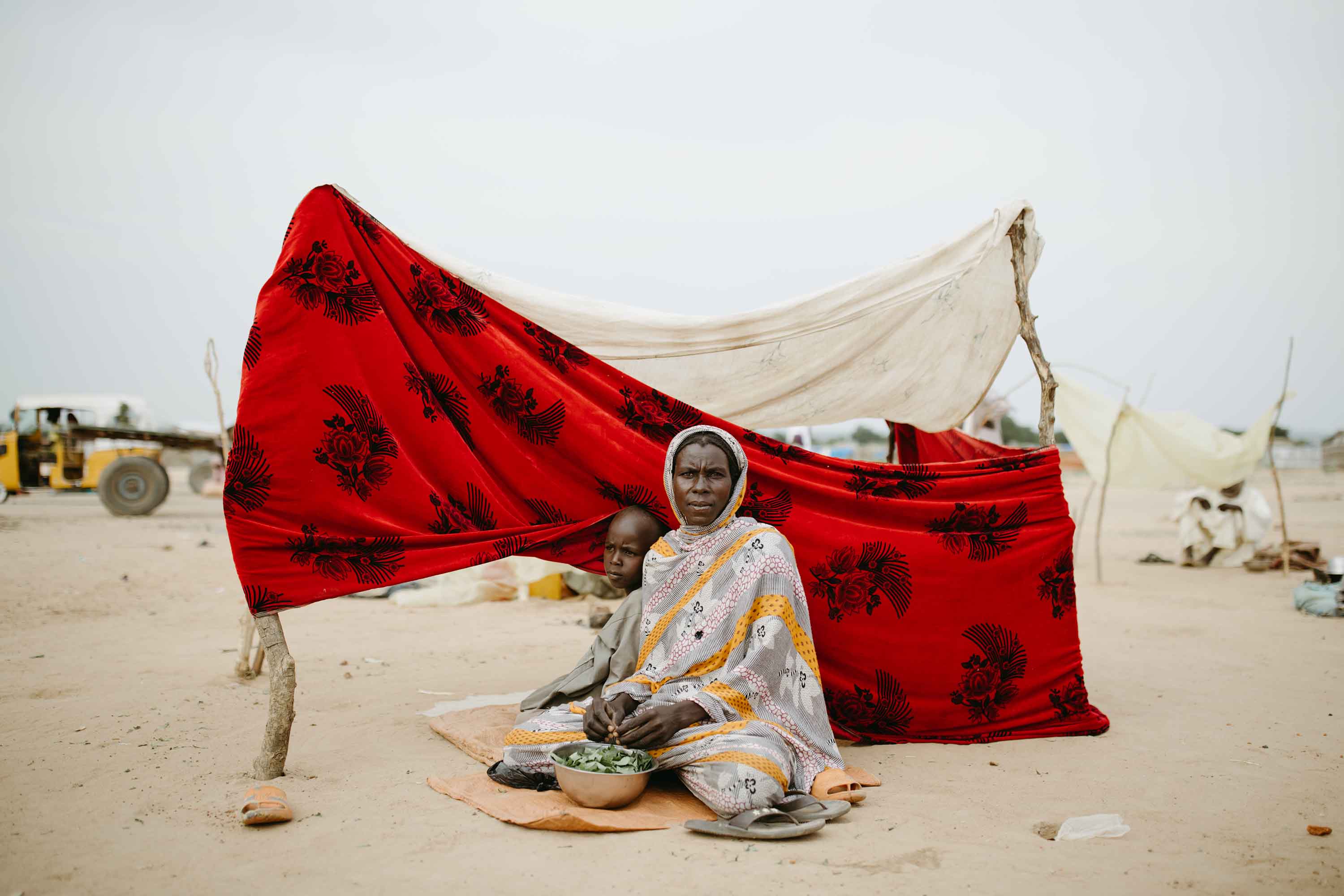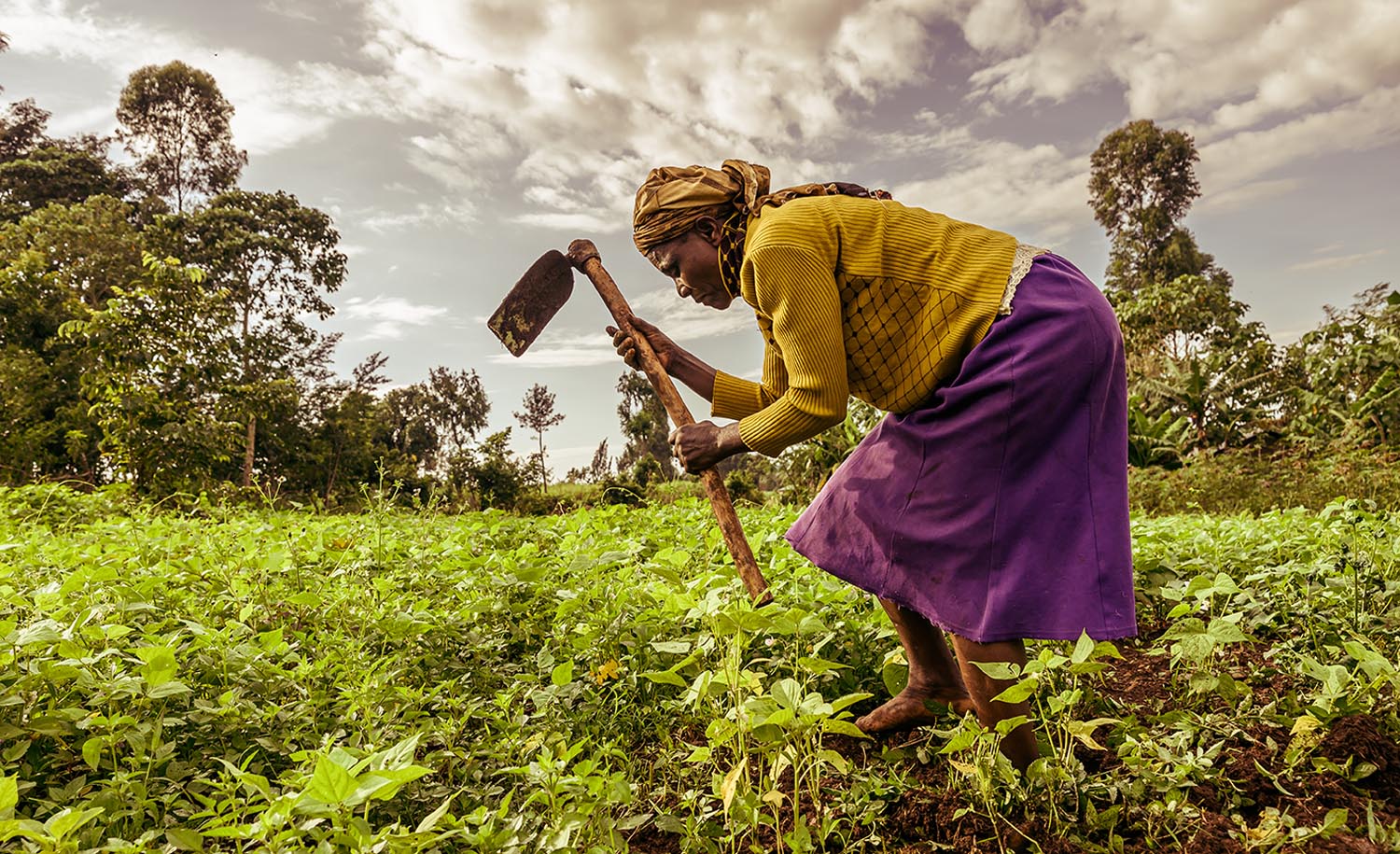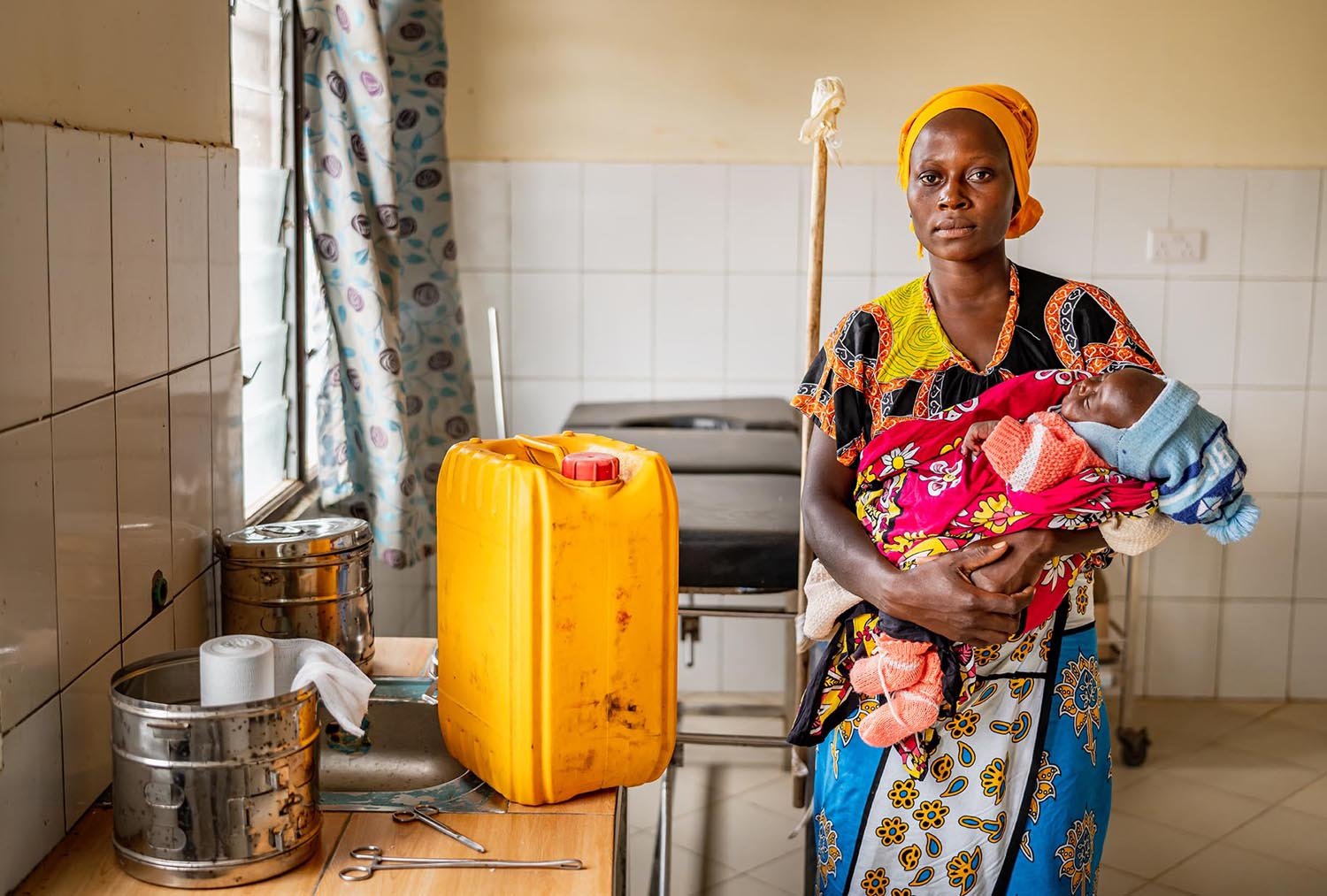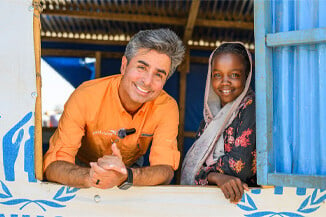Water from a rusted pipe flows down through the grass to a nearby swamp, leaving a trail of orange sediment. “That is the iron in the water. It has rusted the pipe and turned the grass and soil orange,” says Humphrey, a World Vision WASH officer.
“The water in the ground is bad! You cannot drink it, clean with it or even use it for agriculture,” Francis, the chairperson of the Tusinbude household cluster explains as community members sigh in agreement.
“We had to send our children to the river to get water. This was hard for us because three children in our community had died in that river, but we had no other option,” he says sombrely.
Located in the center of town, the river was the only source of water for the whole sub-county for many years. As you approach, you smell the stench first, then you hear the water as it moves downhill. As you get closer, you see groups of children fetching water, animals drinking, and motorbikes and cars being washed, all from the same water source.
In this dire situation, hope came through the household clusters and the community started to flourish. “I asked one of the members how they were prospering. He said they had formed a household cluster,” Francis says. The household cluster is a transformational approach designed by World Vision Uganda, which uses clusters of 15-20 households to disseminate assistance, ensuring the most vulnerable children are reached.
Equipped with a one-week training from World Vision, Francis and members from the 14 other households formed a cluster, and together they were able to solve their water issue. “We built underground rainwater harvesting tanks in 12 households,” Francis says. A tank can get each household through the 3-month dry season. “We collect rainwater for daily use and use the tanks as reservoirs for the dry season,” Francis adds.
With a capacity of nearly 4,000 gallons, most of the tank is built underground, and the ventilation and door are above. As the rainwater drains from the gutters, it is filtered by a small net as it enters the tank to remove any debris. When collecting water, the person can open the door and use a bucket or a jerry can to fill.
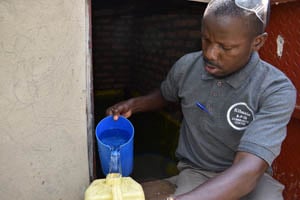
Through the household cluster model, World Vision contributes half of the materials, while each household contributes the rest. “We get some cement, nails, iron sheets and a tapeline for the tanks, and we then do the rest,” Francis says. “Our children do not have to walk for water anymore. We have clean water every day and enough for our gardens,” Francis says with joy.
Now that they have access to clean water, the household cluster is focused on improving sanitation and hygiene. “We have made sure each household has a proper latrine, tippy tap, rubbish pit and bathroom. We even elected two members to make quarterly visits at each house-hold to monitor their sanitation and hygiene, and if anything is lacking, they help the home set them up,” says Francis.
Two years after building the water tanks, the cluster is thriving. “It was everyone for themselves but now, we work together, and our children are happy,” he says smiling. The Tusinbude household cluster has made their way to a better life for all.

